Minsky moment
description: sudden, major collapse of asset values which generates a credit cycle or business cycle
35 results

End This Depression Now!
by
Paul Krugman
Published 30 Apr 2012
Over time, the perception that debt is safe leads to more relaxed lending standards; businesses and families alike develop the habit of borrowing; and the overall level of leverage in the economy rises. All of which, of course, sets the stage for future catastrophe. At some point there is a “Minsky moment,” a phrase coined by the economist Paul McCulley of the bond fund Pimco. This moment is also sometimes known as a Wile E. Coyote moment, after the cartoon character known for running off cliffs, then hanging suspended in midair until he looks down—for only then, according to the laws of cartoon physics, does he plunge. Once debt levels are high enough, anything can trigger the Minsky moment—a run-of-the-mill recession, the popping of a housing bubble, and so on. The immediate cause hardly matters; the important thing is that lenders rediscover the risks of debt, debtors are forced to start deleveraging, and Fisher’s debt-deflation spiral begins.
…
Furthermore, bank runs can be contagious, both because panic may spread to other banks and because one bank’s fire sales, by driving down the value of other banks’ assets, can push those other banks into the same kind of financial distress. As some readers may already have noticed, there’s a clear family resemblance between the logic of bank runs—especially contagious bank runs—and that of the Minsky moment, in which everyone simultaneously tries to pay down debt. The main difference is that high levels of debt and leverage in the economy as a whole, making a Minsky moment possible, happen only occasionally, whereas banks are normally leveraged enough that a sudden loss of confidence can become a self-fulfilling prophecy. The possibility of bank runs is more or less inherent in the nature of banking.
…
CONTENTS Introduction What Do We Do Now? One How Bad Things Are Two Depression Economics Three The Minsky Moment Four Bankers Gone Wild Five The Second Gilded Age Six Dark Age Economics Seven Anatomy of an Inadequate Response Eight But What about the Deficit?
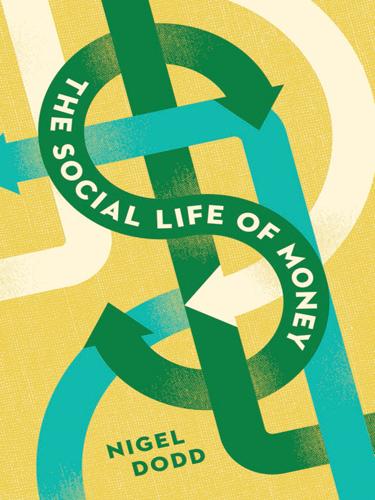
The Social Life of Money
by
Nigel Dodd
Published 14 May 2014
Minsky’s message, which Krugman says economists failed to heed until 2008, was that once an economy is deeply in debt, virtually any event (however small) can trigger a catastrophic collapse. Although many economists, commentators, and analysts were discussing the emergence (both in theory and in fact) of the Minsky moment during 2008, what they were in fact witnessing was arguably the culmination of a Minsky half century. This era would have spanned the entire post–World War II period, during which the Wall Street system was transforming capitalism, leading to a succession of Minsky moments, as well as a financial system in which fraudulent activity was increasingly being seen as part of “normal” business practice. This was a period culminating not just in the subprime crisis, but also in the LIBOR affair (a series of fraudulent actions connected to the LIBOR, London Interbank Offered Rate, and also the resulting investigation and reaction).
…
It was first used by Paul McCulley (of the California-based investment management company, Pimco) to describe the 1998 Russian crisis. “Yesterday’s 50 basis-point Fed funds rate cut was a very positive signal that Fed policy makers grasp that we’re facing a debt-deflation Minsky Moment,” he warned in January 2001 (McCulley 2001a: 4). Three months later, he wrote, “Macroeconomic life after bubbles is not a self-correcting process of renewal, but a self-feeding process of debt deflation—to wit, it’s a Minsky Moment” (McCulley 2001b: 4). 40 This expression was first used in relation to the bailout of Continental Illinois in 1984. 41 Irving Fisher also captured the dynamics of debt deflation in “The Debt-Deflation Theory of Great Depressions” (Fisher 1933). 42 Money manager capitalism refers to an economy dominated by fund managers as opposed to banks.
…
In April 2006, the IMF’s “Global Financial Stability Report” noted a “growing recognition that the dispersion of credit risk by banks to a broader and more diverse group of investors, rather than warehousing such risks on their balance sheets, has helped to make the banking and overall financial system more resilient” (IMF 2006: 51). By 2008, the phrase “Minsky moment”39—when overindebted investors are forced to sell even their good assets to pay off their debt—had become as much a part of the lexicon surrounding the crisis as “too big to fail.”40 According to Paul Krugman, Minsky had previously been quite a marginalized figure who “was warning—to a largely indifferent economics profession—not just that something like that crisis could happen but that it would happen” (Krugman 2012: 42).
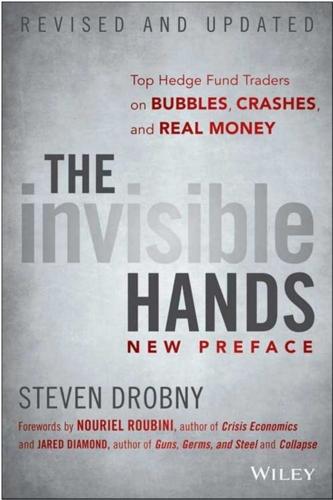
The Invisible Hands: Top Hedge Fund Traders on Bubbles, Crashes, and Real Money
by
Steven Drobny
Published 18 Mar 2010
The hysteria with Milton Friedman’s notion that inflation is always and everywhere a monetary phenomenon places too little significance on the overleveraged nature of our society. It is of course orthodox thinking and it’s hard to say it’s wrong, but I believe it’s wrong. But this is the prevailing mood in investing today. Figure 13.8 Gold, 1979-1980 SOURCE: Bloomberg. Minsky Moment A Minsky moment is a term coined after American economist Hyman Minsky (1919-1996), whose work was primarily focused on understanding the phenomena around financial crises. Minsky held that in good times, investors begin to take on excessive leverage when cash flows begin to cover debt payments, leading to a debt spiral and ultimately a crash.
…
Could the dovish Bernanke produce a similar melt-up at the long end of the bond market? Does the Bernanke Fed understand the big picture in the way that the Volcker Fed did in the 1970s? The Fed understands the gravity of the present situation and is fearful of a debt deflation. However, if I were to be super critical, I would contend that they are tackling a Minsky moment (see box) through the lens of Milton Friedman and that they may convince themselves that the worst is behind us too soon. But then I would also argue that stock market gurus, the government, and the Central Bank of China certainly don’t get it either. Trichet doesn’t get it. Angela Merkel certainly doesn’t get it.
…
The point at which the debt-fueled speculation begins to come unraveled is the point at which no counterparty can be found to bid at the inflated asking prices prevailing in the market. This leads to a precipitous decline in prices and an evaporation of liquidity, as investors must sell even liquid securities in order to cover their debt payments. It is believed that the term “Minsky moment” was first employed by Paul McCulley of PIMCO in 1998, to describe the 1998 Russian financial crisis. Wouldn’t it be ironic if in 50 years time we look back on 2008 and the conventional wisdom becomes that the central banks should have done more? They should have printed more money and been more aggressive, yet they screwed up by taking baby steps because they were terrified of gold at $1,000, of the dollar collapsing, and of the Chinese pulling the money away.

Reimagining Capitalism in a World on Fire
by
Rebecca Henderson
Published 27 Apr 2020
Adam Tooze, “Why Central Banks Need to Step Up on Global Warming,” Foreign Policy, Aug. 6, 2019, https://foreignpolicy.com/2019/07/20/why-central-banks-need-to-step-up-on-global-warming/. 45. Tooze (2019). 46. “Florida’s Sea Level Is Rising,” Sea Level Rise, https://sealevelrise.org/states/florida/. 47. Akhilesh Ganti, “What Is a Minsky Moment?” Investopedia, July 30, 2019, www.investopedia.com/terms/m/minskymoment.asp; John Cassidy. “The Minsky Moment,” New Yorker, January 27, 2008, www.newyorker.com/magazine/2008/02/04/the-minsky-moment. 48. Christopher Flavelle, “Bank Regulators Present a Dire Warning of Financial Risks from Climate Change,” New York Times, Oct. 17, 2019, www.nytimes.com/2019/10/17/climate/federal-reserve-climate-financial-risk.html 49.
…
In April 2019 Mark Carney, the governor of the Bank of England, and François Villeroy de Galhua, the governor of the Banque de France, issued a joint statement pointing out that insured losses from extreme weather events have risen five-fold in the last thirty years. They suggested that the financial markets faced the risk of a climate “Minsky moment”—a reference to the work of the economist Hyman Minsky, whose analysis was used to show how banks overreached themselves before the 2008 financial crisis, and warned that those companies and industries that failed to adjust to climate change might cease to exist.47 In October 2019, Jerome Powell, the Federal Reserve chair, wrote to Senator Brian Schatz, noting that climate change was being “considered as an increasingly relevant issue for the central bank.”

A Little History of Economics
by
Niall Kishtainy
Published 15 Jan 2017
Although he was no longer alive when the crisis came, he was rediscovered when it hit; many people believed that his ideas explained what happened better than conventional economics could. Second-hand copies of his books started selling for hundreds of pounds. The crisis got yet another name: ‘the Minsky moment’. In the 1980s, free-market economics had made a comeback. Economists believed that when left alone the economy was fairly stable, without wild accelerations and crashes. Minsky, on the other hand, thought that capitalism runs into crises. This made him a bit of a radical. His attitude might have had something to do with his upbringing: his parents were socialists, Russian-Jewish immigrants who had met at a party to celebrate the centenary of the birth of Karl Marx.
…
Lenders and borrowers were creating a self-fulfilling upwards spiral, what economists sometimes call a bubble. Minsky called the reckless system of lending ‘Ponzi finance’ after a famous Italian swindler named Charles Ponzi whose crooked schemes worked by creating bubbles that pulled in more and more gullible investors. The problem with bubbles is that they burst. Then comes the Minsky moment, when lenders get cold feet and start asking for their loans to be repaid. They stop lending to risky borrowers and house prices stop rising quite so quickly. That undermines the system of Ponzi finance, which depends on fast rises. People start selling houses, and prices fall. Borrowers find that they can’t make their repayments and the banks start to take possession of their homes.
…
(i), (ii) Kerala (India) (i) Keynes, John Maynard (i), (ii), (iii), (iv), (v), (vi) Keynesian theory (i), (ii), (iii) Klemperer, Paul (i) Krugman, Paul (i), (ii) Kydland, Finn (i), (ii) labour (i) in ancient Greece (i) and market clearing (i) women as unpaid (i) labour theory of value (i), (ii) laissez-faire (i) landowners (i), (ii), (iii) Lange, Oskar (i) law of demand (i), (ii) leakage of spending (i) Lehman Brothers (i) leisure class (i) leisured, women as (i) Lenin, Vladimir Ilyich (i), (ii) Lerner, Abba (i) Lewis, Arthur (i) Lincoln, Abraham (i) List, Friedrich (i) loss aversion (i) Lucas, Robert (i), (ii) MacKay, Charles (i) Macmillan, Harold (i) macro/microeconomics (i) Malaysia, and speculators (i) Malthus, Thomas (i), (ii), (iii) Malynes, Gerard de (i), (ii) manufacturing (i), (ii) division of labour (i) see also Industrial Revolution margin (i) marginal costs (i), (ii) marginal principle (i), (ii), (iii) marginal revenue (i) marginal utility (i), (ii) market, the (i) market clearing (i) market design (i) market failure (i), (ii), (iii), (iv) ‘Market for Lemons, The’ (Akerlof) (i) market power (i) markets, currency (i), (ii) Marshall, Alfred (i), (ii), (iii), (iv), (v) Marx, Karl (i), (ii), (iii), (iv), (v), (vi), (vii) Marxism (i) mathematics (i), (ii), (iii) means of production (i) mercantilism (i), (ii) Mesopotamia (i) Mexico, pegged currency (i) micro/macroeconomics (i) Microsoft (i) Midas fallacy (i) minimum wage (i) Minsky, Hyman (i) Minsky moment (i), (ii) Mirabeau, Marquis de (i), (ii), (iii) Mises, Ludwig von (i), (ii), (iii), (iv) mixed economies (i), (ii) Mobutu Sese Seko (i) model villages (i) models (economic) (i), (ii), (iii), (iv) modern and traditional economies (i), (ii) monetarism (i) monetary policy (i), (ii) money (i), (ii), (iii), (iv), (v), (vi) see also coins; currency money illusion (i) money wages (i) moneylending see usury monopolies (i), (ii) monopolistic competition (i), (ii) monopoly, theory of (i) monopoly capitalism (i), (ii), (iii) monopsony (i) moral hazard (i), (ii) multiplier (i) Mun, Thomas (i), (ii), (iii) Muth, John (i) Nash, John (i), (ii) Nash equilibrium (i) national income (i), (ii), (iii), (iv), (v) National System of Political Economy (List) (i) Nelson, Julie (i) neoclassical economics (i) net product (i) Neumann, John von (i) New Christianity, The (Saint-Simon) (i) new classical economics (i) New Harmony (Indiana) (i) New Lanark (Scotland) (i) Nkrumah, Kwame (i), (ii) non-rival good (i) Nordhaus, William (i), (ii) normative economics (i), (ii) Obstfeld, Maurice (i) Occupy movement (i) oligopolies (i) opportunity cost (i), (ii) organ transplant (i) output per person (i) Owen, Robert (i) paper money (i), (ii) Pareto, Vilfredo (i) pareto efficiency (i), (ii) pareto improvement (i) Park Chung-hee (i) partial equilibrium (i) pegged exchange rate (i) perfect competition (i), (ii), (iii), (iv), (v) perfect information (i) periphery (i) phalansteries (i) Phillips, Bill (i) Phillips curve (i), (ii), (iii), (iv), (v), (vi), (vii) physiocracy (i), (ii) Pigou, Arthur Cecil (i), (ii), (iii) Piketty, Thomas (i), (ii), (iii) Plato (i), (ii), (iii) policy discretion (i) Ponzi, Charles (i) Ponzi finance (i) population and food supply (i), (ii), (iii) of women (i) positive economics (i) poverty (i), (ii), (iii), (iv), (v) in Cuba (i) Sen on (i) and utopian thinkers (i) Prebisch, Raúl (i) predicting (i) Prescott, Edward (i), (ii) price wars (i), (ii) primary products (i) prisoners’ dilemma (i) private costs and benefits (i) privatisation (i) productivity (i), (ii), (iii) profit (i), (ii), (iii), (iv) and capitalism (i), (ii) proletariat (i), (ii) property (private) (i), (ii), (iii), (iv), (v) and communism (i), (ii), (iii), (iv) protection (i), (ii), (iii) provisioning (i) public choice theory (i) public goods (i) quantity theory of money (i) Quesnay, François (i) Quincey, Thomas de (i), (ii) racism (i) Rand, Ayn (i) RAND Corporation (i), (ii) rate of return (i), (ii) rational economic man (i), (ii), (iii), (iv), (v) rational expectations (i), (ii), (iii), (iv), (v) real wages (i), (ii), (iii) recession (i) and governments (i), (ii), (iii) Great Recession (i) Keynes on (i), (ii) Mexican (i) redistribution of wealth (i) reference points (i) relative poverty (i) rent on land (i), (ii), (iii) rents/rent-seeking (i) resources (i), (ii) revolution (i), (ii), (iii), (iv) Cuban (i) French (i), (ii), (iii), (iv) Russian (i), (ii) Ricardo, David (i), (ii), (iii) risk aversion (i) Road to Serfdom, The (Hayek) (i) robber barons (i) Robbins, Lionel (i) Robinson, Joan (i) Roman Empire (i) Romer, Paul (i) Rosenstein-Rodan, Paul (i) Roth, Alvin (i), (ii) rule by nature (i) rules of the game (i) Sachs, Jeffrey (i) Saint-Simon, Henri de (i) Samuelson, Paul (i), (ii) savings (i), (ii) and Say’s Law (i) Say’s Law (i) scarcity (i), (ii), (iii), (iv), (v), (vi) Schumpeter, Joseph (i), (ii) sealed bid auction (i) second price auction (i) Second World War (i) securitisation (i) self-fulfilling crises (i) self-interest (i) Sen, Amartya (i), (ii) missing women (i), (ii), (iii) services (i) shading bids (i), (ii) shares (i), (ii), (iii), (iv), (v), (vi) see also stock market Shiller, Robert (i), (ii) signalling (i) in auctions (i) Smith, Adam (i), (ii), (iii), (iv), (v) social costs and benefits (i) Social Insurance and Allied Services (Beveridge) (i) social security (i), (ii) socialism (i), (ii), (iii), (iv), (v) socialist commonwealth (i) Socrates (i) Solow, Robert (i) Soros, George (i), (ii), (iii) South Africa, war with Britain (i) South Korea, and the big push (i) Soviet Union and America (i) and communism (i), (ii) speculation (i) speculative lending (i) Spence, Michael (i) spending government (fiscal policy) (i), (ii), (iii), (iv), (v), (vi), (vii) and recessions (i), (ii) and Say’s Law (i) see also investment stagflation (i), (ii) Stalin, Joseph (i) standard economics (i), (ii), (iii), (iv) Standard Oil (i) Stiglitz, Joseph (i) stock (i) stock market (i), (ii), (iii), (iv), (v) stockbrokers (i) Strassmann, Diana (i), (ii) strategic interaction (i), (ii) strikes (i) subprime loans (i) subsidies (i), (ii) subsistence (i) sumptuary laws (i) supply curve (i) supply and demand (i), (ii), (iii), (iv) and currencies (i) and equilibrium (i), (ii) in recession (i), (ii), (iii) supply-side economics (i) surplus value (i), (ii) Swan, Trevor (i) tariff (i) taxes/taxation (i) and budget deficit (i) carbon (i) and carbon emissions (i) and France (i) and public goods (i) redistribution of wealth (i) and rent-seeking (i) technology as endogenous/exogenous (i) and growth (i) and living standards (i) terms of trade (i) Thailand (i) Thaler, Richard (i) theory (i) Theory of the Leisure Class, The (Veblen) (i) Theory of Monopolistic Competition (Chamberlain) (i) Thompson, William Hale ‘Big Bill’ (i) threat (i) time inconsistency (i), (ii) time intensity (i) Tocqueville, Alexis de (i) totalitarianism (i) trade (i), (ii), (iii) and dependency theory (i) free (i), (ii), (iii) trading permit, carbon (i) traditional and modern economies (i), (ii) transplant, organ (i) Treatise of the Canker of England’s Common Wealth, A (Malynes) (i) Tversky, Amos (i), (ii) underdeveloped countries (i) unemployment in Britain (i) and the government (i) and the Great Depression (i) and information economics (i) and Keynes (i) and market clearing (i) and recession (i) unions (i), (ii) United States of America and free trade (i) and growth of government (i) industrialisation (i) and Latin America (i) Microsoft (i) recession (i), (ii) and the Soviet Union (i) and Standard Oil (i) stock market (i) wealth in (i) women in the labour force (i) unpaid labour, and women (i) usury (i), (ii), (iii) utility (i), (ii), (iii), (iv) utopian thinkers (i), (ii) Vanderbilt, Cornelius (i), (ii) Veblen, Thorstein (i), (ii), (iii) velocity of circulation (i), (ii) Vickrey, William (i) wage, minimum (i) Walras, Léon (i) Waring, Marilyn (i) wealth (i) and Aristotle (i), (ii) and Christianity (i) Piketty on (i) and Plato (i) Smith on (i) Wealth of Nations, The (Smith) (i), (ii) welfare benefits (i), (ii), (iii), (iv) welfare economics (i) Who Pays for the Kids?

Capitalism 4.0: The Birth of a New Economy in the Aftermath of Crisis
by
Anatole Kaletsky
Published 22 Jun 2010
The point of inflection in this cycle, when lenders suddenly realize that they were dangerously overoptimistic in their lending decisions and their original assumptions about asset values, is often described as a Minsky Moment. A classic such moment occurred during the Russian government default and hedge fund crisis of 1998.5 According to many analysts, the 2007-09 credit crunch was a Minsky Moment writ large. George Soros’s Theory of Reflexivity can be seen as a generalization of Minsky’s Financial Instability Hypothesis and Keynes’s theory of animal spirits. Soros puts both on a different philosophical basis by emphasising the two-way interaction between people’s perceptions and the events perceived.
…
The changed fundamentals then reinforce the initial expectations, creating self-perpetuating cycles that can push an economy, or indeed an entire society, further and further from a balanced state. Eventually, a point is reached when expectations become so extreme and unrealistic that the fundamentals can no longer be sufficiently manipulated by the process of reflexivity. At the point that Soros calls the Moment of Truth, which is identical in financial markets to the Minsky Moment, the self-reinforcing mechanism goes into reverse—and boom turns to bust. In his books and lectures, Soros has used reflexivity to analyze many extreme and unexpected events, including the collapse of communism and breakup of the Soviet Union. During the 2007-09 crisis, he persuasively argued that the purely financial boom-bust cycle was combined with a wider cycle in free-market ideology, starting in the late 1970s and culminating in the extreme deregulation of the precrisis phase.
…
Morgan Kahn, Richard Kahneman, Daniel Kaldor, Nicholas Kalecki, Michal Keynes/Keynesian economics “animal spirits,” biography of Keynes boom-bust cycles explanation Capitalism and Golden Age ideas/policies mathematics and See also Economics eras/second; Macroeconomics Khrushchev, Nikita King, Mervyn Knight, Frank Krugman, Paul Kuhn, Thomas Labor unions stagflation and unemployment and Lagarde, Christine Laissez-faire philosophy Lehman Brothers capitalism transition and saving scenario/effects Lehman Brothers collapse chain reaction from confidence collapse and effects GSE seizure and share price plunge Limits to growth/physical resources Lloyds Lockhart, James MacDonald, Ramsay Macroeconomics economics eras/second new classical school and recovery from financial crisis See also Capitalism 4.0/economic policy; Keynes/Keynesian economics Mad Max (movie) Mad Max Paradox Mahbubani, Kishore Mandela, Nelson Mandelbrot, Benoit Mark-to-market accounting/effects Market fundamentalism description economic recovery and failed states and financial crisis of 2007-09 and flaws/dangers of imaginary world of oil prices/shock (2008) and progressive taxation and term See also Economics eras/third; Monetarism; specific individuals; Thatcher-Reagan revolution Marris, Robin Marx, Karl on capitalism social problems and Masters, Michael Mathematics in economics normal distribution use oversimplification and “science” and McCarthy, Joe Meade, James Medicare/Medicaid, U.S. Megatrends overview summary Mellon, Andrew Merkel, Angela Merrill Lynch Mexican government bankruptcy Micawber, Mr./Principle Microeconomics Mill, John Stuart Minsky, Hyman Minsky Moment (Mis)behavior of Markets (Mandelbrot) Mises, Ludwig von Mississippi Company, Paris Mixed economy adaptability and energy policy example of future government-market relationship Monetarism demand management and description end of government role/inflation and outside U.S. See also Market fundamentalism; specific individuals; Thatcher-Reagan revolution Morgan, J.P.
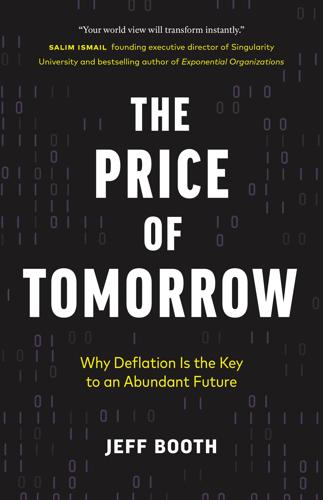
The Price of Tomorrow: Why Deflation Is the Key to an Abundant Future
by
Jeff Booth
Published 14 Jan 2020
The capitalist process in much the same way in which it destroyed the institutional framework of feudal society also undermines its own.”14 Schumpeter’s view is consistent with that of Nobel laureate Hyman Minsky, but not in the way you might think. Minsky, an American economist, theorized that long periods of financial stability naturally lead to instability because of the rise of debt. The “Minsky moment” is the tipping point where the debt-fuelled asset bubble collapses, assets become difficult to sell at any price, and a market collapse ensues. Interestingly, though, Minsky didn’t forecast a write-down in debt. Although Minsky, who passed away in 1996, is legendary for the Minsky moment, his most prominent call was something else. Minsky realized that even governments that preached free-market rules, when faced with a systematic collapse, would always act as the lender of last resort and bail out the market.
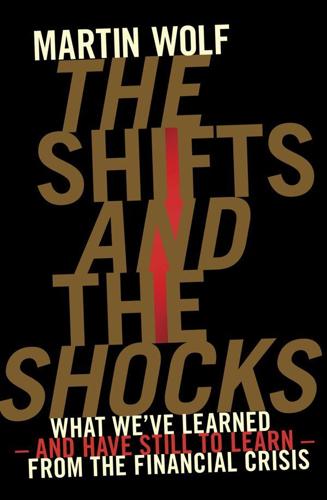
The Shifts and the Shocks: What We've Learned--And Have Still to Learn--From the Financial Crisis
by
Martin Wolf
Published 24 Nov 2015
People working for financial institutions are both the most expert and the most deeply invested in the solidity of the boom. Trees do not reach the sky. Ultimately, the bubble will expand no longer. When new buyers can no longer borrow, prices stop rising. From ceasing to rise to starting to fall takes but a moment: nobody wants to hold assets that nobody wants to buy. This is the ‘Minsky moment’, a term coined by Paul McCulley, formerly of the Pacific Investment Management Company (PIMCO). Once the supply of ‘greater fools’ has dried up, those who have borrowed in the expectation of further price rises will be forced to sell, the institutions who have financed them will to try to get their money back, and those who have lent to such institutions will also want their money back.
…
It is a macroeconomic process, moreover, not a microeconomic one: it shapes the entire economy. There could then be two further answers to the question: what stops credit expansion? One is that a crisis stops it. That is all too unpleasantly true: in the end the elastic credit system snaps back into a credit crisis: that is the ‘Minsky moment’, when panic sets in. A more pleasant answer is that the central bank stops credit expansion by raising interest rates. The implicit answer of the pre-crisis official orthodoxy was that central banks would stop the excess credit expansion in time, or at least not too late, by responding to rising inflation in the prices of goods and services.
…
In economic parlance, they are ‘endogenous’, not ‘exogenous’. 19. Hyman Minsky, ‘The Modeling of Financial Instability: An Introduction’, in Modeling and Simulation 5, Proceedings of the Fifth Annual Pittsburgh Conference, 1974, Instrument Society of America, pp. 267–73. 20. John Cassidy, ‘The Minsky Moment’, The New Yorker, 4 February 2008, www.newyorker.com/talk/comment/2008/02/04/080204taco_talk_cassidy. See also ‘Five Steps of a Bubble’, Investopedia, 2 June 2010, http://www.investopedia.com/articles/stocks/10/5-steps-of-a-bubble.asp. 21. John Kenneth Galbraith, The Great Crash of 1929 (Boston and New York: Mariner, 1997) p. 133. 22.

The Bond King: How One Man Made a Market, Built an Empire, and Lost It All
by
Mary Childs
Published 15 Mar 2022
He was a disciple of Hyman Minsky, an economist who had preached in the 1960s through the ’80s that too much calm, too much stability, sows the seeds of instability. When the economy is booming, people forget the bad times and reach a little too far, borrow a little too much. McCulley nudged Gross as early as 2002 to read these then-deep-cut papers. The economy was approaching a “Minsky moment,” McCulley said, a tipping point into market chaos. At Pimco’s Investment Committee meetings—which could turn into a brawl at any moment, with Gross sometimes impassively overseeing the ruckus, other times actively leading the gang—McCulley bellowed about “the shadow banking system” in his drawling, backwoods accent.
…
A couple of weeks earlier, the cumulative value of those holdings had been €2.1 billion; now it was €1.59 billion. Or thereabouts. “The complete evaporation of liquidity in certain market segments of the U.S. securitization market has made it impossible to value certain assets fairly, regardless of their quality or credit rating,” BNP said. This was it. This was McCulley’s “Minsky moment,” when increasingly reckless risk taking culminates in the bursting of asset price bubbles. Market collapse. “I remember the day like my son’s birthday,” McCulley said later. “Game over.” After months of teetering, hoping the subprime problem wouldn’t spread, stock and bond markets began to swoon in earnest, together.
…
“At that point, ‘For Sale’”: “Pimco Exec Cites Fallout from Housing,” The Orange County Register, June 5, 2006. “stable disequilibrium”: Bill Gross, “Mission Impossible?” Investment Outlook, Pimco.com, May 16, 2006. “the shadow banking system”: Paul McCulley, “Teton Reflections,” Investment Outlook, Pimco.com, September 7, 2007. “Minsky moment”: Paul McCulley, “The Shadow Banking System and Hyman Minsky’s Economic Journey,” Pimco.com, May 26, 2007. “same old discussions”: Allianz, Letter to the Shareholders, Fiscal Year 2000. “Anonymity, not notoriety”: Bill Gross, “Miracu(less),” Investment Outlook, Pimco.com, August 1, 2001. “unresponsive mule”: Paul McCulley, “Time: Varying Variables Vary,” Investment Outlook, Pimco.com, October 19, 2006.

Smart Money: How High-Stakes Financial Innovation Is Reshaping Our WorldÑFor the Better
by
Andrew Palmer
Published 13 Apr 2015
Minsky was an American economist who described a process of growing confidence that leads people to take on more and more debt, until the only way it can be safely financed is if asset prices keep rising. At this point, it takes only a small shift in circumstances or attitudes for confidence to evaporate, investors to default, and fire sales of assets to start. That rapid crumbling of confidence is known as a Minsky moment. But the paper’s emphasis on the role of safety in explaining financial instability is what resonates most after the events of the past few years.7 The authors contend that episodes of financial creativity begin when investors want more of a certain type of product than the market can currently supply.
…
Flowers, 69, 81 Japan, banking crisis in, 75 Japan, financial innovation in, 27, 29, 39–40 Jha, Saumitra, 27 Jiménez-Martín, Sergi, 73 Job creation, young small firms and, 147–148 Joint-stock firms, 23 JPMorgan, 77, 169 Jump-to-default risk, 238 Käärmann, Kristo, 190 Kabbage, 218 Kahneman, Daniel, 47, 137 Kanjorski, Paul, 145 Kauffman Foundation, 158 Kennedy, John F., 32 Keys, Benjamin, 48 Kharroubi, Enisse, 79 Kickstarter, 172 King, Stephen, 99 Klein, David, 182 Krugman, Paul, xv Lahoud, Sal, 166 Lang, Luke, 153, 161–162 Laplanche, Renaud, 179, 184, 188, 190, 193–194, 196–197 Latency, 53 Law of large numbers, 17 Layering, 57 Left-digit bias, 46 Lehman Brothers, x, 44, 65 Lending direct, 84 marketplace, 184 payday, 200 relationship-based, 11, 151, 206–208 secured, xiv, 76 unsecured, 206 See also Loans; Peer-to-peer lending Lending Club, 172, 179–180, 182–184, 187, 189, 194–195, 197 Leonardo of Pisa (Fibonacci), 19 Lerner, Josh, 59 Lethal pandemic, risk-modeling for demographic profile, 230 exceedance-probability curve, 231–232, 232 figure 3 historical data, 228–229 infectiousness and virulence, 229–230 location of outbreak, 230–231 Leverage, 51, 70–71, 80, 186, 188 Leverage ratio, 76–77 Lewis, Michael, 57 Liber Abaci or Book of Calculation (Fibonacci), 19 LIBOR (London Interbank Offered Rate), 41 Liebman, Jeffrey, 98 Life expectancy government reaction to, 128–129 projections of, 124–127, 126 figure 2 ratio of young to older people, 127–128 Life-insurance policies, 142 Life-settlements industry, 142–143 Life table, 20 Limited liability, 212 Liquidity, 12–14, 39, 185–186 List, John, 109 The Little Book of Behavioral Investing (Montier), 156 Lo, Andrew, 113–115, 117–123 Loans low-documentation, 48–49 secured, 76 small business, 181, 216 student, 164, 166–167, 169–171, 182 syndicated, 41 Victory Loans, 28 See also Lending; Peer-to-Peer lending Logistic regression, 201 London, early fire insurance in, 16–17 London, Great Fire of, 16 London Interbank Offered Rate (LIBOR), 41 Long-Term Capital Management, 123 Longevity, betting on, 143–144 Loss aversion, 136 Lotteries, 212, 213 Low-documentation loans, 48–49 Lumni, 165, 168, 175 Lustgarten, Anders, 111 Lynn, Jeff, 160–161 Mack, John, 180 Mahwah, New Jersey, 52, 53 Marginal borrowers assessment of, 216–217 behavioral finance and, 208–214 industrialization of credit, 206 microfinance and, 203 savings schemes, 209–214 small businesses, 215–219 unsecured lending to, 206 Wonga, 203, 205, 208 Marginal borrowers (continued) ZestFinance, 199, 202, 205–206 Maritime piracy, solutions to, 151–152 Maritime trade, role of in history of finance, 3, 7–8, 14, 17, 23 Market makers, 15–16, 55 MarketInvoice, 195, 207, 217–218 Marketplace lending, 184 Markowitz, Harry, 118 Massachusetts, use of inflation-protected bonds in, 26 Massachusetts, use of social-impact bonds in, 98 Matching engine, 52 Maturity transformation, 12–13, 187–188, 193 McKinsey & Company, ix, 42 Mercator Advisory Group, 203 Merrill, Charles, 28 Merrill, Douglas, 199, 201 Merrill Lynch, 28 Merton, Robert, 31, 113–114, 123–124, 129–132, 142, 145 Mian, Atif, 204 Michigan, University of, financial survey by, 134–135 Microfinance, 203 Micropayment model, 217 Microwave technology, 53 The Million Adventure, 213–214 Minsky, Hyman, 42 Minsky moment, 42 Mississippi scheme, 36 Mitchell, Justin, 166–167 Momentum Ignition, 57 Monaco, modeling risk of earthquake in, 227 Money, history of, 4–5 Money illusion, 73–74 Money laundering, 192 Money-market funds, 43, 44 Monkeys, Yale University study of loss aversion with, 136 Montier, James, 156–157 Moody, John, 24 Moody’s, 24, 235 Moore’s law, 114 Morgan Stanley, 188 Mortgage-backed securities, 49, 233 Mortgage credit by ZIP code, study of, 204 Mortgage debt, role of in 2007–2008 crisis, 69–70 Mortgage products, unsound, 36–37 Mortgage securitization, 47 Multisystemic therapy, 96 Munnell, Alicia, 129 Naked credit-default swaps, 143 Nature Biotechnology, on drug-development megafunds, 118 “Neglected Risks, Financial Innovation and Financial Fragility” (Gennaioli, Shleifer, and Vishny), 42 Network effects, 181 New York, skyscraper craze in, 74–75 New York City, prisoner-rehabilitation program in, 108 New York Stock Exchange (NYSE), 31, 52, 53, 61, 64 New York Times, Merrill Lynch ad in, 28 Noncorrelated assets, 122 Nonprofits, growth of in United States, 105–106 Northern Rock, x NYMEX, 60 NYSE Euronext, 52 NYSE (New York Stock Exchange), 31, 52, 53, 61, 64 OECD (Organization for Economic Co-operation and Development), 128, 147 Oldfield, Sean, 67–68, 80–84 OnDeck, 216–218 One Service, 94–95, 105, 112 Operating expense ratio, 188–189 Options, 15, 124 Order-to-trade ratios, 63 Oregon, interest in income-share agreements, 172, 176 Organization for Economic Co-operation and Development (OECD), 128, 147 Overtrading, 24 Packard, Norman, 60 Pandit, Vikram, 184 Park, Sun Young, 233 Partnership mortgage, 81 Pasion, 11 Pave, 166–168, 173, 175, 182 Payday lending Consumer Financial Protection Bureau, survey on, 200 information on applicants, acquisition of, 202 underwriting of, 201 PayPal, 219 Peak child, 127 Peak risk, 228 Peer-to-peer lending advantages of, 187–189 auction system, 195 big investors in, 183 borrowers, assessment of, 197 in Britain, 181 commercial mortgages, 181 CommonBond, 182, 184, 197 consumer credit, 181 diversification, 196 explained, 180 Funding Circle, 181–182, 189, 197 investors in, 195 Lending Club, 179–180, 182–184, 187, 189, 194–195, 197 network effects, 181 ordinary savers and, 184 Prosper, 181, 187, 195 RateSetter, 181, 187, 196 Relendex, 181 risk management, 195–197 securitization, 183–184, 196 Peer-to-peer lending (continued) small business loans, 181 SoFi, 184 student loans, 182 Zopa, 181, 187, 188, 195 Pensions, cost of, 125–126 Perry, Rick, 142–143 Peterborough, England, social-impact bond pilot in, 90–92, 94–95, 104–105, 112 Petri, Tom, 172 Pharmaceuticals, decline of investment in, 114–115 Piracy Reporting Centre, International Maritime Bureau, 151 Polese, Kim, 210 Poor, Henry Varnum, 24 “Portfolio Selection” (Markowitz), 118 Prediction Company, 60–61 Preferred shares, 25 Prepaid cards, 203 Present value of cash flows, 19 Prime borrowers, 197 Prince, Chuck, 50–51, 62 Principal-agent problem, 8 Prisoner rehabilitation programs, 90–91, 94–95, 98, 108, 112 Private-equity firms, 69, 85, 91, 105, 107 Projection bias, 72–73 Property banking crises and, xiv, 69 banking mistakes involving, 75–80 behavioral biases and, 72–75 dangerous characteristics of, 70–72 fresh thinking, need for, xvii, 80 investors’ systematic errors in, 74–75 perception of as safe investment, 76, 80 Prosper, 181, 187, 195 Provisioning funds, 187 Put options, 9, 82 Quants, 19, 63, 113 QuickBooks, 218 Quote stuffing, 57 Raffray, André-François, 144 Railways, affect of on finance, 23–25 Randomized control trials (RCTs), 101 Raphoen, Christoffel, 15–16 Raphoen, Jan, 15–16 RateSetter, 181, 187, 196 RCTs (randomized control trials), 101 Ready for Zero, 210–211 Rectangularization, 125, 126 figure 2 Regulation NMS, 61 Reinhart, Carmen, 35 Reinsurance, 224 Relendex, 181 Rentes viagères, 20 Repurchase “repo” transactions, 15, 185 Research-backed obligations, 119 Reserve Primary Fund, 44 Retirement, funding for anchoring effect, 137–138 annuities, 139 auto-enrollment in pension schemes, 135 auto-escalation, 135–136 conventional funding, 127–128 decumulation, 138–139 government reaction to increased longevity, 128–129 home equity, 139–140 life expectancy, projections of, 124–127, 126 figure 2 life insurance policies, cash-surrender value of, 142 personal retirement savings, 128–129, 132–133 replacement rate, 125 reverse mortgage, 140–142 savings cues, experiment with, 137 SmartNest, 129–131 Reverse mortgages, 140–142 Risk-adjusted returns, 118 Risk appetite, 116 Risk assessment, 24, 45, 77–78, 208 Risk aversion, 116, 215 Risk-based capital, 77 Risk-based pricing model, 176 Risk management, 55, 117–118, 123, 195–197 Risk Management Solutions, 222 Risk sharing, 8, 82 Risk-transfer instrument, 226 Risk weights, 77–78 Rogoff, Kenneth, 35 “The Role of Government in Education” (Friedman), 165 Roman Empire business corporation in, 7 financial crisis in, 36 forerunners of banks in, 11 maritime insurance in, 8 Rotating Savings and Credit Associations (ROSCAs), 209–210 Roulette wheel, use of in experiment on anchoring, 138 Royal Bank of Scotland, 186 Rubio, Marco, 172 Russia, mortgage market in, 67 S-curve, in diffusion of innovations, 45 Salmon, Felix, 155 Samurai bonds, 27 Satsuma Rebellion (1877), 27 Sauter, George, 58 Save to Win, 214 Savings-and-loan crisis in US (1990s), 30 Savings cues, experiment with, 137 Scared Straight social program, 101 Scholes, Myron, 31, 123–124 Science, Technology, and Industry Scoreboard of OECD, 147 Securities and Exchange Commission (SEC), 54, 56, 57, 58, 64 Securities markets, 14 Securitization, xi, 20, 37–38, 117–122, 183–184, 196, 236 Seedrs, 160–161 Sellaband, 159 Shared equity, 80–84 Shared-equity mortgage, 84 Shepard, Chris, xii–xiii Shiller, Robert, xv–xvi, 242 Shleifer, Andrei, 42, 44 Short termism, 58 SIBs.
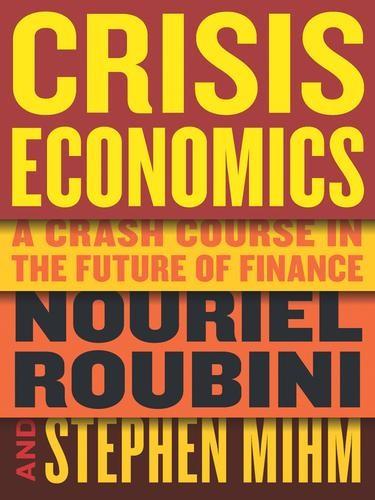
Crisis Economics: A Crash Course in the Future of Finance
by
Nouriel Roubini
and
Stephen Mihm
Published 10 May 2010
Panic struck the markets, uncertainty spread, liquidity evaporated, and central banks around the world threw lifelines to banks large and small and to financial institutions of every stripe. It was a rescue effort on a scale that Bagehot never foresaw. For this crisis, although a textbook case, was bigger, swifter, and more brutal than anything seen before. It was a nineteenth-century panic moving at twenty-first-century speed. The Minsky Moment By the spring of 2006, the financial system, with its extraordinary reliance on leverage—and its blind faith that asset prices would only continue to rise—was primed for a breakdown of monumental proportions. Financing increasingly depended on the sort of speculative and Ponzi borrowing that Minsky predicted.
…
Faced with dwindling reserves, both the traditional and the shadow banks began to hoard cash, refusing to lend on the basis of collateral that looked more dubious by the day. A sudden aversion to risk, a sudden desire to dismantle the pyramids of leverage on which profits have until so recently depended, is the key turning point in a financial crisis. In earlier times, it was called “discredit” or “revulsion”; more recently it has been called a “Minsky moment.” By late spring of 2007, that moment had definitely arrived. The Unraveling Hedge funds may not look like banks, but they operate much as banks do, getting short-term investments from individual and institutional investors as well as short-term repurchase agreements, or repos, from investment banks.
…
leverage of banks borrowers and compensation and of corporations defined embedded in foreign countries of hedge funds of households of insurance companies of investment banks regulation of systemic or compound liar loans LIBOR (London Interbank Offered Rate) LIBOR-OIS spread liquidity banks and central banks and investment banks and in money markets mortgages and liquidity crunch emerging economies and liquidity trap Lithuania living wills loans bridge corporate credit card foreign investment as home equity IMF Latin American debt crisis and liar LIBOR and l ong-term NINJA nonrecourse PPIP and short-term student subprime see also auto loans; collateralized loan obligations; mortgages lobbying activities local government fiscal policy and Lombard Street Lombard Street London London Interbank Offered Rate (LIBOR) Long-Term Capital Management (LTCM) Luskin, David McCulley, Paul Mackay, Charles Madoff, Bernard Maiden Lane corporations Malaysia managers Manias, Panics, and Crashes (Kindleberger) manufacturing margin calls margin requirements markets efficiencies of failure of self-regulation of Markit Group mark-to-market accounting rules Marshall, Alfred Martin, William McChesney, Jr. Marx, Karl mathematical models MBSs Mellon, Andrew Mellon Bank Menger, Carl Merit Financial Merrill Lynch Mexico bailout of swap lines and mezzanine tranche Middle East see also specific countries migrant workers Mill, John Stuart Minsky, Hyman taxonomy of borrowers of Minsky moment Mises, Ludwig von Mississippi Company monetarism monetary policy aftermath of Austrian School’s view of deflation and easy fiscal policy blurred with fiscal policy compared with to frustrate bubbles Great Depression and Great Moderation and of Greenspan Keynesian view of liquidity trap and tight money easy government guarantees for printing of remittances of migrant workers money market funds Money Market Investor Funding Facility (MMIFF) money markets money supply contraction of monoline insurers Moody’s Investor Service moral hazard bailouts and contingent capital and Fannie Mae and Freddie Mac and guarantees and money loaned to banks and principal-agent problem and shareholders and Morgan, J.
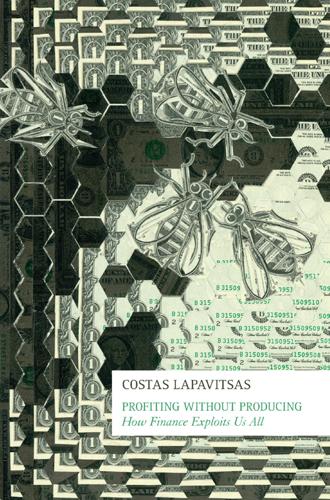
Profiting Without Producing: How Finance Exploits Us All
by
Costas Lapavitsas
Published 14 Aug 2013
The response of economists following the burst of the bubble was similarly weak, typically offering bland technical advice, such as improving information flows and extending regulation across financial institutions; for instance, see Randall Dodd, ‘Subprime: Tentacles of a Crisis’, Finance and Development, December 2007. Immediately after the financial meltdown, heterodox economics had its moment in the sun as several economists and others claimed that the crisis was a ‘Minsky moment’; see Charles Whalen, ‘The U.S. Credit Crunch of 2007: A Minsky Moment’, Levy Economics Institute Public Policy Brief No. 92, 2007; L. Randall Wray, ‘Lessons from the Subprime Meltdown’, Levy Economics InstituteWorking Paper No. 552, 2007; Wray, ‘Financial Markets Meltdown: What Can We Learn from Minsky?’, Levy Economics Institute Public Policy Brief No. 94, April 2008.
…
Guenther Roth and Claus Wittich, New York: Bedminster Press, 1968. Weeks, John, ‘Surfing the Troubled Waters of ‘Global Turbulence’: A Comment’, Historical Materialism 5, Winter 1999, pp. 211–30. Weiss, Linda, ‘Globalization and the Myth of the Powerless State’, New Left Review 225, 1997, pp. 3–27. Whalen, Charles, ‘The U.S. Credit Crunch of 2007: A Minsky Moment’, Public Policy Brief No. 92, Annandale-on-Hudson, NY: Levy Economics Institute, 2007. White, William R., ‘Is Price Stability Enough?’, Working Paper No. 205, Bank for International Settlements, 2006. White, William R., ‘Procyclicality in the Financial System: Do We Need a New Macro-financial Stabilisation Framework?’
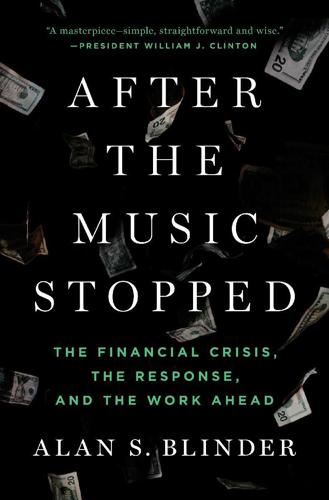
After the Music Stopped: The Financial Crisis, the Response, and the Work Ahead
by
Alan S. Blinder
Published 24 Jan 2013
When times are good, asset values are rising, and loan defaults are rare, it is all too easy to forget one of the laws of financial gravity: What goes up too fast usually comes crashing down. The late Hyman Minsky, an important but neglected economist, emphasized the forgetfulness factor in his theory of recurrent financial crises. In recent years, many Wall Streeters have taken to calling the 2007–2009 crisis a “Minsky moment.”* It was quite a moment. Too bad traders didn’t remember their Minsky before the debacle. Too bad regulators didn’t, either. THE EFFICIENT MARKETS HYPOTHESIS The adjective “efficient” in “efficient markets” refers to how investors use information. In an efficient market, every titbit of new information is processed correctly and immediately by investors.
…
See Foreclosures as house of cards, 84–87 housing sector crash, 16–19 initial events in (2006–2007), 90–94 investment bank failures. See Investment banks; specific banks by name job loss during. See Unemployment legacies of, 429–33 Lehman collapse, role of, 3–4, 19–21, 119, 168, 171 lessons for future, 433–42. See also Financial reform as liquidity versus credit-granting crisis, 93–94 as Minsky moment, 64 money market funds, runs from, 142–49 and Obama presidency. See Obama, Barack personal wealth, loss of, 6, 193, 354 and recession. See Great Recession (2007–2009) stock market losses, 114, 193, 256–57 U.S. economy, damage to, 5–6, 9–10, 171–73 Financial Crisis Inquiry Commission (FCIC), 28, 112, 156, 288–89 Financial crisis precursors.
…
See also Morgan Stanley Maiden Lane, 107n Making Home Affordable, 334–37 Marketable debt, federal guarantee for, 161–62 Mayer, Chris, 326 Medicare/Medicaid, and federal budget deficit, 390, 398 Mellon, Andrew, 353 Meltzer, Allan, 349 Merrill Lynch Bank of America purchase of, 122, 129, 150, 152–53, 164–65 collateralized debt obligations (CDOs), 151–52 financial decline of, 151–52 leverage ratio of, 52 mortgage-related holdings, 89 Orange County derivatives failure, 60 post-collapse status, 52, 153 TARP funds for, 201 Mezzanine tranche, 74 Minsky, Hyman, 64, 434 Minsky moment, 64 Mishkin, Frederic “Rick,” 92, 105 Monetary policy recession, fighting with, 350 special tactics. See Unconventional monetary policy (UMP) Money market funds break the buck redemptions, 143–44 features of, 143–44 guarantees from Treasury, 145–47 no FDIC guarantees, 144 runs from (2008), 142–49 Monti, Mario, 424–25, 428 Moody’s, 400 rating failures, 79–81 Moral hazard and bailouts, 113–14, 125, 138–39 and European Central Bank (ECB), 423 meaning, financial scenario for, 108–9 past, learning from, 431–32 Washington Mutual lesson, 156–57 Morgan Stanley as bank holding company, 129, 154 as derivatives dealer, 61 financial decline of, 153–54 hedge fund run, 153 leverage ratio of, 52 PDCF loan to, 153–54 post-collapse reorganization, 52 TARP funds for, 201 Morgenson, Gretchen, 117 Mortgage-backed securities (MBS).

Red Flags: Why Xi's China Is in Jeopardy
by
George Magnus
Published 10 Sep 2018
When the banking system fails, the veneer of stability cracks quickly, exposing economic and political fault-lines from which it takes a long time to recover. The essential lesson, though, is that financial crises happen because financial institutions create leverage, which, over time, is liable to become excessive and end up with what I called in 2007 a Minsky Moment. Named after the economist Hyman Minsky, this is the point where the highest state of leverage – when lenders are providing funds to borrowers in order to service and repay debt – leads to systemic financial instability.14 We know that the growth of domestic credit facilitated by banks and other financial institutions is central to financial crises.
…
‘China Banks Guru Warns of Bad Debt Reckoning’, Barrons, 15 August 2016. 12. IMF, ‘Global Financial Stability Report’, April 2016, pp. 16–18. 13. Charles W. Calomiris and Stephen H. Haber, Fragile by Design: The Political Origins of Banking Crises and Scarce Credit, Princeton University Press, 2014, p. 4. 14. I heard the term Minsky Moment first in 1998 from a UBS colleague at the time, Paul McCulley, opining on the Asian crisis. 15. Moritz Schularick and Alan M. Taylor, ‘Credit Booms Gone Bust: Monetary Policy, Leverage Cycles and Financial Crises 1870–2008’, American Economic Review, vol. 10, no. 22, April 2012, pp. 1029–61. 16.

Why Aren't They Shouting?: A Banker’s Tale of Change, Computers and Perpetual Crisis
by
Kevin Rodgers
Published 13 Jul 2016
One of their inspirations for this view is the work of a maverick American economist, Professor Hyman Minsky (1919–96), whose ‘financial instability hypothesis’, built on the work of Keynes, states the heretical notion that modern economies financed by a modern banking system will inevitably experience bubbles and crashes without needing an external (‘exogenous’) shock.7 Over a protracted period of ‘good times’, he asserts, capitalist economies naturally move from stability into a regime of speculative, ‘Ponzi’, pyramid scheme finance that eventually collapses in on itself in a ‘Minsky moment’. Although he never lived to see it, the credit implosion of 2008 is the exemplar of such a collapse. Central to his argument is that bankers ‘are merchants of debt who strive to innovate in the assets they acquire and the liabilities they market’ [my emphasis], thus increasing the stock of ‘money’ for speculation.8 The process of innovation is continuous.
…
This is a trick requiring such computational intensity that it would have seemed almost magical as little as five years ago. The same rapid improvement is happening in corporate computing.) A flood of new recruits would have arrived – no doubt in the most complex areas. Leverage, driven by competition, would, I’m sure, have been taken to the limit again. Where the eventual trigger for the next Minsky moment would have occurred, and how many years it would have taken to get to it, is a matter of pure speculation. Would it have been another property-related crash? It is tempting to think so, since property is a gigantically important asset class. If you are lucky enough to have accumulated any wealth in your lifetime it is likely that a large part of it is stored in the value of your home: the total market value of housing in the US in 2014 was around $22–4 trillion, the same order of magnitude as the value of all privately held paper financial assets, or approximately 150 per cent of GDP.30 Ratios are higher in other countries, such as the UK.

How Markets Fail: The Logic of Economic Calamities
by
John Cassidy
Published 10 Nov 2009
“At a time when many economists were coming to believe in the efficiency of markets,” the Journal’s Justin Lahart noted, “Mr. Minsky was considered somewhat of a radical.” Now, however, many Wall Street economists and at least one former governor of the Fed were eagerly poring over his articles and books, most of which were out of print. “We are in the midst of a Minsky moment, bordering on a Minsky meltdown,” Paul McCulley, a managing director at Pacific Investment Management Company, the world’s biggest manager of bond mutual funds, told Lahart. Minsky was born in Chicago on September 23, 1919. He came from a left-wing background: his mother was a trade union activist and his father a member of the Socialist Party.
…
At some point, lenders get nervous about all the dubious credit they have already extended. This prompts them to call in some existing loans and restrict the issuance of new ones. Where money was flowing freely, it is suddenly much harder to obtain, even for financially sound creditors. This is a “Minsky moment” of the type that Paul McCulley and other Wall Street economists identified in August 2007. Struggling to meet their financial commitments, some shaky borrowers are forced to sell off whatever assets they can liquidate. “This,” Minsky noted drily, “is likely to lead to a collapse of asset values,” which, in turn, can lead to “a spiral of declining investment, declining profits, and declining asset prices.”
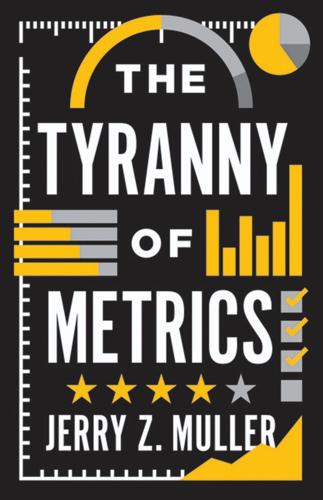
The Tyranny of Metrics
by
Jerry Z. Muller
Published 23 Jan 2018
Muller, “Capitalism and Inequality: What the Right and the Left Get Wrong,” Foreign Affairs (March–April 2013), pp. 30–51. 21. Hyman P. Minsky, “Uncertainty and the Institutional Structure of Capitalist Economies,” Journal of Economic Issues 30, no. 2 (June 1996), pp. 357–68; Levy Economics Institute, Beyond the Minsky Moment (e-book, April 2012); Alfred Rappaport, Saving Capitalism from Short-Termism (New York, 2011). 22. On the propensity for short-termism of publicly traded companies, see John Asker, Joan Farre-Mensa, and Alexander Ljungqvist, “Corporate Investment and Stock Market Listing: A Puzzle?” Review of Financial Studies 28, no. 2 (2015), pp. 342–90. 23. http://www.businessinsider.com/blackrock-ceo-larry-fink-letter-to-sp-500-ceos-2016–2. 24.
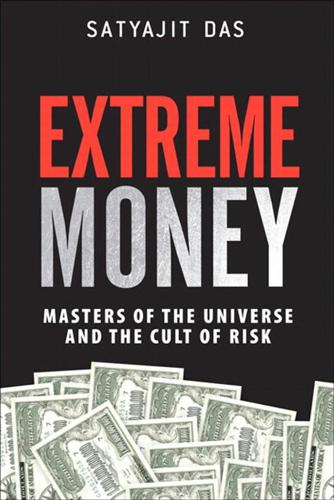
Extreme Money: Masters of the Universe and the Cult of Risk
by
Satyajit Das
Published 14 Oct 2011
Values played no role in what happened.”29 Children of Privilege The economist Hyman Minsky theorized that in the early stages of a business cycle money is only available to creditworthy borrowers, known ironically as hedge finance. As the cycle develops, financial conditions look rosy and competing lenders extend money to marginal borrowers, a phase known as speculative finance and ultimately Ponzi finance. The cycle ends in a Minsky moment when the supply of money slows or shuts off. Borrowers unable to meet financial obligations try to sell assets, leading to a collapse in prices that triggers a spiral of economic decline. Hedge funds are Minsky machines. They borrow to purchase assets, a strategy that works in moderation. Increased borrowing to buy assets artificially boosts asset values, generating profits that allow further leverage until the supply of money ceases.
…
See also regulation Marketwatch, 338 Markopolos, Harry, 292 Markowitz, Harry, 116-117 Marshall, Alfred, 78 Marx, Groucho, 97, 354 Marx, Karl, 33 Master’s Voice record label, 157 MasterCard, 71-72 Masters of the Universe, 257, 262, 308, 332-333, 343, 366 Masters, Michael, 334 Mauboussin, Michael, 246 Mauger, Charlie, 202 Maxim, 162 Maximum City, 44 MBSs (mortgage backed securities), 173 arbitrage, 242 McCaw Cellular, 146 McClure’s Magazine, 52 McCulley, Paul, 269 McDade, Herbert, 288 McDaniel, Raymond, 284 McGraw, Terry, III, 284 MCI, 146 McKinley, William, 26 McLuhan, Marshall, 72, 89, 366 McNamara, Frank, 71 mean-variance approach, 117 Meaning of Life, The, 180 Means, Gardiner, 54 Meckling, William H., 120 Media, financial news, 89-99 Mehta, Suketa, 44 Melamed, Leo, 125 Mencken, H.L., 80, 329 Mephistopheles, 36 Merchant of Venice, 117, 366 mergers, 57-59, 242, 310 CitiGroup, 75 General Electric (GE), 61 Meriwether, John, 248-249 Merkel, Angela, 325 Merlin Entertainments, 163 Merrill Lynch, 66, 76, 148, 178, 191, 280, 315, 330 bonuses, 319 Center for Research in Security Prices (CRSP), 131 merger with BoA, 339 MERS (Mortgage Electronic Registration System), 271 Merton, Robert K., 121, 130, 248 Metallgesellschaft, 56 Metro-Goldwyn-Mayer, 155 Metromedia, 149 Metromedia Broadcasting Corporation, 149 Metropolitan Club, 304 Meyer, Phillipe, 141 mezzanine “mezz” debt, 154 notes, 170-171 Mickey Mouse, 324 microeconomics, definition of, 102 middle class for blue-collar workers, 42 Middle East, 264 petro-dollars, 82 Mikado, The, 128 Milgram, Stanley, 335 military industrial complex, 294 Milken, Michael, 141, 144-150, 152, 168, 244 1987 equity crash, 153 Milken’s mobsters, 146-147 purchases of, 322 Mill, John Stuart, 126, 305 Millennium Challenge, 264-265 Miller, Bill, 245, 360 Miller, Daniel, 130 Miller, Merton, 116, 119, 248 Mills, Susan, 299 Milton, John, 359 Minibonds, 220 Minogue, Kylie, 157 Minsky machines, 261. See also hedge funds Minsky moments, 261 Minsky, Hyman, 260-262 minutes to midnight, 34 Mirrored Room, The, 36, 64, 238 Mishkin, Frederic, 316 Mississippi Company, 28, 275 MIST (Mexico, Indonesia, South Korea and Turkey), 91 Mitchell, Andrea, 299 mobile phone airtime credits, 24 Mobile, Alabama, 55 models risk, 246 securitization, 177 Modern Corporation and Private Property, The, 54 modern portfolio theory (Markowitz), 117 Modigliani, Franco, 119 Modigliani-Miller propositions, 119-120 Mohamme, Mahathir, 328 Molden, Mike, 184 momentum, 242 monetization, 38 money circulation of, 32 cultures, 20 exchanges, 23-24 gold.

The Price of Time: The Real Story of Interest
by
Edward Chancellor
Published 15 Aug 2022
As the tenth anniversary of the stimulus approached, the departing Governor of the People’s Bank, Zhou Xiaochuan, warned of ‘hidden, complex, sudden, contagious and hazardous’ risks in China’s credit system.115 The Governor pointed to Ponzi lending schemes operated by internet companies.fn13 (A few months earlier, the collapse of a peer-to-peer lending scheme had prompted large public protests in Beijing’s financial district.116) He also warned of financial risks from zombie companies, poor risk models, speculative bubbles and financial innovation. The country’s top banker feared that China faced its own ‘Minsky moment’.117 Not long after, the government seized control of Baoshang Bank, a regional lender based in Baotou, Inner Mongolia. Baoshang had grown rapidly by issuing negotiable certificates of deposit to other banks. Its controlling shareholder had reportedly misused these funds. Zhou’s People’s Bank turned out to have been an unwitting accomplice.
…
, China Financial Markets, 20 September 2021. 115. Bloomberg News, ‘China’s Central Bank Chief Warns of “sudden, contagious and hazardous” Financial Risks’, Bloomberg, 4 November 2017. 116. Wright and Rosen, ‘Credit and Credibility’, p. 95. 117. Elias Glenn and Kevin Yao, ‘China Central Bank Warns against “Minsky Moment” Due to Excessive Optimism’, Reuters, 18 October 2017. 118. Wright and Rosen, ‘Credit and Credibility’. Baoshan Bank finally closed its doors in the summer of 2020 – the first Chinese bank failure since the collapse of Shantou Commercial Bank in 2001. 119. Estimate from Global Financial Integrity.
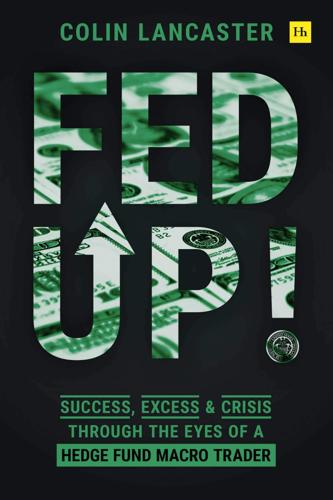
Fed Up!: Success, Excess and Crisis Through the Eyes of a Hedge Fund Macro Trader
by
Colin Lancaster
Published 3 May 2021
“But probably underbaked until something happens that leads the market to agree. Let’s start small, it’s good value, but who knows when or if the market will come around to it.” The Rabbi keeps going. “You know, the real tail event will be a massive credit event or something that hits consumers, maybe a big bank or some other big GSE in China. That would be the Minsky moment.” We are in the middle of the discussion when I get a text from my sister. An old friend died. He was a guy I lost touch with, a cop when I met him. One of the top three fun people I’ve ever met, and a blue-collar guy through and through. We had some wild-ass nights. He was the self-proclaimed Asian sensation.
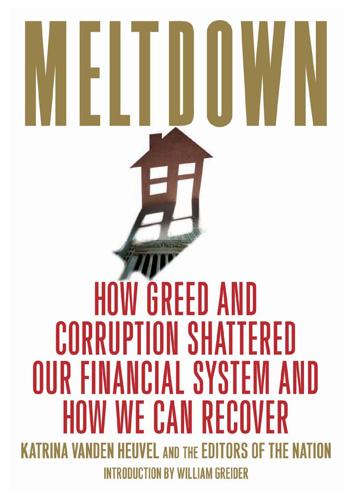
Meltdown: How Greed and Corruption Shattered Our Financial System and How We Can Recover
by
Katrina Vanden Heuvel
and
William Greider
Published 9 Jan 2009
We’re All Minskyites Now R O B E R T P O L L I N November 17, 2008 As the most severe financial crisis since the 1930s Depression has unfolded over the past eighteen months, the ideas of the late economist Hyman Minsky have suddenly come into fashion. In the summer of 2007, the Wall Street Journal ran a front-page article describing the emerging crisis as the financial market’s “Minsky moment.” His ideas have since been featured in the Financial Times, BusinessWeek and the New Yorker, among many other outlets. Minsky, who spent most of his academic career at Washington University in St. Louis and remained professionally active until his death in 1996, deserves the recognition. He was his generation’s most insightful analyst of financial markets and the causes of financial crises.
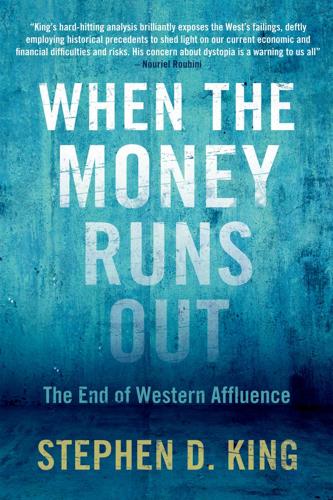
When the Money Runs Out: The End of Western Affluence
by
Stephen D. King
Published 17 Jun 2013
See Bernanke and James, The Gold Standard, Deflation, and Financial Crisis. 15. P. Krugman, End This Depression Now! (Norton, New York, 2012). 16. See J. Yellen, ‘A Minsky Meltdown: Lessons for Central Bankers’, Board of Governors of the Federal Reserve, Washington, DC, Apr. 2009. Named after Hyman Minsky, a Minsky moment is a situation where, in an over-indebted economy, people are forced to sell good assets to meet the obligations to their creditors, leading to a financial meltdown and a huge increase in the demand for cash. 17. J. M. Keynes, How to Pay for the War: A Radical Plan for the Chancellor of the Exchequer (Macmillan, London, 1940). 18.

Rethinking the Economics of Land and Housing
by
Josh Ryan-Collins
,
Toby Lloyd
and
Laurie Macfarlane
Published 28 Feb 2017
However, his theories were highly applicable to the financial crisis of 2007–8, when a long period of apparent stability (the ‘Great Moderation’) and rising asset prices led to increasingly risky behaviour by households and banks in borrowing and lending against land and housing. Indeed, the crisis was termed a ‘Minsky moment’ because his work seemed to describe so well pre- and post-crisis dynamics (Minsky was largely ignored prior to the crisis). Economists increasingly now make use of his theories in relation to housing markets, for example describing ‘Minskyian households’ (Stockhammer and Wildauer, 2016, p. 2) as those which take confidence from increasing house prices to leverage up against their real estate assets to boost their consumption, resulting in increases in household debt-to-income ratios and financial fragility (see for example Dymski, 2010; Ryoo, 2015).

The Age of Stagnation: Why Perpetual Growth Is Unattainable and the Global Economy Is in Peril
by
Satyajit Das
Published 9 Feb 2016
Finally, lenders finance borrowers whose income will cover neither the principal nor interest repayments, relying on increasing asset values to service the debt, a phase known as Ponzi finance. The cycle ends when the supply of money slows or stops. Borrowers unable to meet financial obligations try to sell assets, leading to a collapse in prices that triggers a financial and economic crisis. The GFC was such a Minsky moment. With debt and savings being two sides of the same coin, when the liabilities cannot be repaid, the phantom assets become worthless. The system collapses. The second factor in the events of 2008 was a large global imbalance in consumption, investment, and savings. Some countries overconsumed or overinvested relative to income, running up large foreign debts.

Servant Economy: Where America's Elite Is Sending the Middle Class
by
Jeff Faux
Published 16 May 2012
As John Maynard Keynes, Charles Kindleberger, and many, many other economists, such as Hyman Minsky, had shown, financial excesses were built into the modern economy. Economists might have different ways of explaining the boom-and-bust cycle, but it is inevitable: what goes up must come down. This was no secret on Wall Street. The term Minsky moment was coined by an investment banker for the turning point that kicks off a panic in which investors begin dumping even high-quality assets in order to cover their debts. In September 2007, as the mortgage market was cracking, the Brookings Institution brought together Robert Rubin, Larry Summers, Ronald Steel (George W.

MegaThreats: Ten Dangerous Trends That Imperil Our Future, and How to Survive Them
by
Nouriel Roubini
Published 17 Oct 2022
The real economy that produces goods and services is poised to boom for a while, fed by debt arising from low interest rates, ample credit, and enormous economic stimulus by governments. The party will go on until reckless speculation becomes unsustainable, ending with the inevitable collapse in bullish sentiment, a phenomenon called a Minsky moment, named for economist Hyman Minsky. It’s what happens when market watchers suddenly begin to wake up and worry about irrational exuberance. Once their sentiment changes, a crash is inevitable as an asset and credit bubble and boom goes into a bust. Booms and bubbles always precede busts and crashes, but the scale this time far exceeds all precursors.

The Road to Ruin: The Global Elites' Secret Plan for the Next Financial Crisis
by
James Rickards
Published 15 Nov 2016
The difficulties of replacing trades of a bankrupt counterparty when notional amounts are in the tens of trillions of dollars, represented by thousands of contracts covering underlying instruments in stocks, bonds, commodities, and currencies, spread across the books of scores of subsidiaries and special purpose entities in multitudinous markets around the world, are extraordinary. This is why select banks are too big to fail. A single point of failure collapses the entire system. A crack-up has names like “Tipping Point,” “Black Swan,” and “Minsky Moment” given by sociologists, economists, and media. Those concepts, colorful as they may be, are not science. The dynamics of ruin are best understood using complexity theory, a hard science that offers tools to see collapse coming in advance. The term “complexity” is often used loosely as synonymous with complication or connectedness.
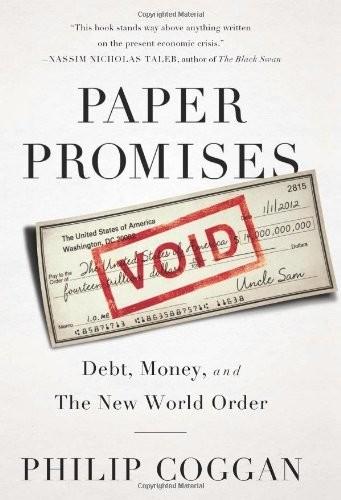
Paper Promises
by
Philip Coggan
Published 1 Dec 2011
Money (debt) expanded to gratify the desire of consumers and businesses for greater economic activity (more trade). But some of that money was used to buy assets, in the form of shares and houses, which rose rapidly in price. Banks did what they always do: borrow short term to lend long term against the security of property. And as has happened regularly through history, they went too far. The ‘Minsky moment’ then happened and the spiral went into reverse. Or to put it another way, the pyramid scheme ran out of new clients. Given that the crisis took forty years to build, it is not surprising that forecasters were taken aback by the timing. The economist Tim Congdon wrote a book called The Debt Threat1 at the end of the 1980s; another economist, Peter Warburton, wrote Debt and Delusion at the end of the 1990s.2 The failure of the crisis to arrive at those points made it possible for optimists to argue that higher debt levels were just a sign of a more sophisticated economy and financial system.
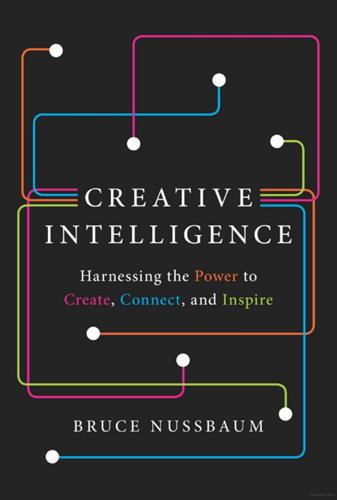
Creative Intelligence: Harnessing the Power to Create, Connect, and Inspire
by
Bruce Nussbaum
Published 5 Mar 2013
University of Chicago, Journal of Applied Corporate Finance, vol. 21, no. 4, 2009; Siegel, “Efficient Market Theory and the Crisis”; Roger Lowenstein, “Book Review: The Myth of the Rational Market by Justin Fox,” Washington Post, June 7, 2009, accessed September 13, 2012, http://www.washingtonpost.com/wp-dyn/ content/article/2009/06/05/AR2009060502053.html. 228 “black swans”: Nassim Nicholas Taleb, The Black Swan: The Impact of the Highly Improbable (New York: Random House, 2007). 228 By excluding uncertainty: Frank H. Knight, Risk, Uncertainty and Profit (New York: Sentry Press, 1921). 229 In the 1960s and 1970s, as EMT: John Cassidy, “The Minsky Moment,” New Yorker, February 4, 2008, accessed September 13, 2012, http://www.newyorker.com/talk/comment/2008/ 02/04/080204taco_talk_cassidy. 229 Charles Kindleberger’s: Charles P. Kindleberger, Manias, Panics and Crashes (Hoboken, NJ: Wiley, 1978). 229 British journalist and essayist: Walter Bagehot, Lombard Street (New York: Scribner, 1873). 229 And who hasn’t heard: Charles MacKay, Extraordinary Popular Delusions and the Madness of Crowds, with a foreword by Andrew Tobias (1841; New York: Harmony Books, 1980). 230 The belief in the efficient market: Professors Roger Martin and Ben Lee pointed out the linkage between CEO pay, profits, and stock market performance to me; Michael Jensen and William Meckling, “Theory of the Firm: Managerial Behavior, Agency Costs and Ownership Structure,” Journal of Financial Economics, October 1976, vol. 3, no. 4, 305–60, http://papers.ssrn.com/abstract=94043. 230 In their work, including a paper: Ibid. 230 Roberto Goizueta: “Coke CEO Roberto C.
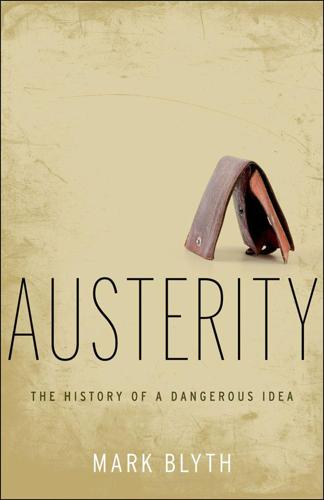
Austerity: The History of a Dangerous Idea
by
Mark Blyth
Published 24 Apr 2013
As such, Ireland’s net income from foreign sources and its foreign obligations are outsized relative to other countries and its services exports are overstated. 28. Stephen Kinsella and Kevin O’Sullivan, “An Institutional Architecture for Meta-Risk Regulation in Irish Banking: Lessons from Anglo-Irish Banks Minsky Moment,” forthcoming in Journal of Banking Regulation (2013), 6. 29. Ibid., 5. 30. Kinsella, “Is Ireland Really?” 224. 31. John Mauldin, Endgame: The End of the Debt Supercycle and How It Changes Everything (Hoboken, NJ: John Wiley & Sons, 2011), 223. 32. Francisco Carballo-Cruz, “Causes and Consequences of the Spanish Economic Crisis: Why the Recovery Is Taken So Long?
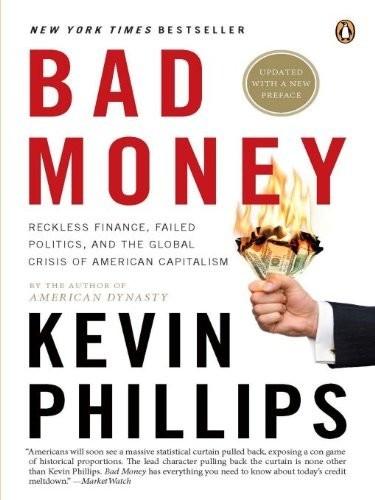
Bad Money: Reckless Finance, Failed Politics, and the Global Crisis of American Capitalism
by
Kevin Phillips
Published 31 Mar 2008
One Austrian School acolyte, Kurt Richebächer, had predicted just that unhappy fate for the U.S. housing bubble several years before his death during the summer of 2007. Hyman Minsky (1919-96), part Keynesian, part disciple of Joseph Schumpeter, became so well known for preaching the financial system’s vulnerability to speculation and risk that admirers labeled the August panic a “Minsky Moment.” Certainly the Austrian-Minsky fusion, so specific in its finger pointing, will rise or fall on the economic outcome of the next several years. Parallel inflections have been suggested for energy: the insistence that fossil-fuel history has also had dramatic break points that prompted government, commerce, and society to redirect how energy was used and to recast the global structure of its production and consumption.
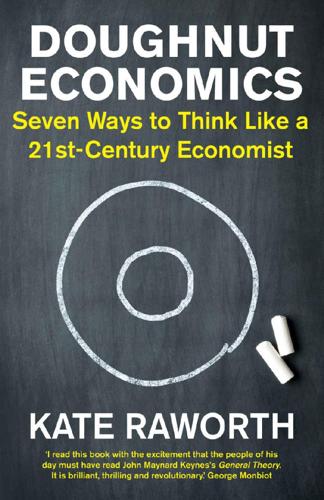
Doughnut Economics: Seven Ways to Think Like a 21st-Century Economist
by
Kate Raworth
Published 22 Mar 2017
In Minsky’s own words, ‘The tendency to transform doing well into a speculative investment boom is the basic instability in a capitalist economy.’28 When prices eventually don’t keep pace with expectations, as will inevitably happen, mortgage defaults kick in, assets fall further in value, and – in what has been dubbed a ‘Minsky moment’ – finance goes off the cliff of insolvency, bringing on a crash. Guess what happens post-crash? Confidence gradually rebuilds and the process begins all over again in a rolling cycle of dynamic disequilibrium. There’s still a lot to learn from the chicken that crossed the road. In 2008 the fallout from this inherent market instability was compounded by the financial regulators’ failure to understand the inherent dynamics of banking networks.
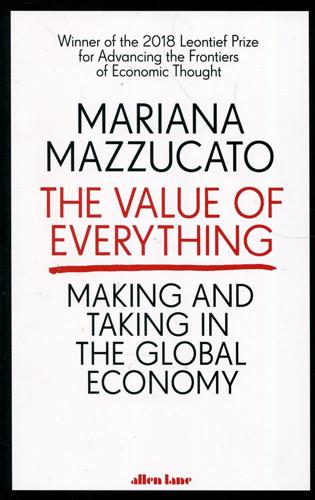
Value of Everything: An Antidote to Chaos The
by
Mariana Mazzucato
Published 25 Apr 2018
If ‘the capital development of a country becomes a by-product of the activities of a casino, the job is likely to be ill-done'.25 The US economist Hyman Minsky, who was much influenced by Keynes, wrote extensively about the self-destabilizing dynamics of finance. In his work on financial instability26 he nested Keynes's critique within an alternative theory of money. This theory, which began far from the mainstream but forced its way in when a bubble-bursting ‘Minsky moment' broke the long boom in 2008, holds that the quantity of money in an economy is created by the interplay of economic forces rather than by an outside agency such as a country's central bank. Although portrayed as all-powerful (and so responsible for all financial instability) by Milton Friedman and the ‘monetarists' propelled to prominence by 1970s stagnation, central banks such as the US Federal Reserve can only indirectly and weakly control the private-sector banks and their money creation, by setting the base interest rate.
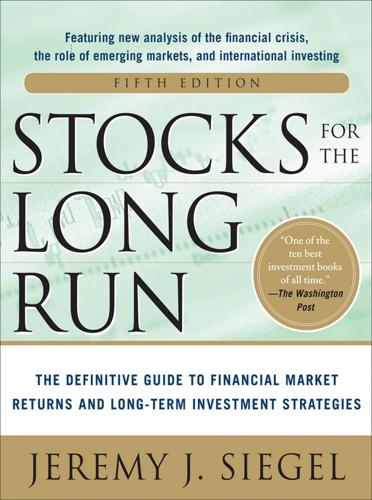
Stocks for the Long Run 5/E: the Definitive Guide to Financial Market Returns & Long-Term Investment Strategies
by
Jeremy Siegel
Published 7 Jan 2014
,” CEPR, August 2002; and “The Housing Bubble and the Financial Crisis,” Real-World Economics Review, no. 46, March 20, 2008. 17. Others who warned about the economic crisis were Gary Shilling (“End of the Bubble Bailouts,” Forbes, August 29, 2006), an economic consultant and Forbes columnist, and George Magnus (“What This Minsky Moment Means,” FT, August 22, 2007), senior economic advisor to UBS. 18. Many who questioned the sustainability of the price rise noted that when increases in demand bring about a rise in the price of real estate, the consequent increase in supply dampens and reverses price increases. Only factors that are fixed in supply, such as scarce land, will experience a sustained increase in prices if demand permanently rises.
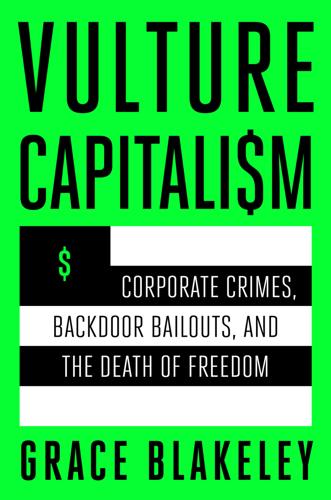
Vulture Capitalism: Corporate Crimes, Backdoor Bailouts, and the Death of Freedom
by
Grace Blakeley
Published 11 Mar 2024
Dr. Roubini was disparagingly referred to as “Dr. Doom” by his colleagues for his perspicacious comments. Steve Keen, an economist who specializes in the theories of Hyman Minsky, also predicted in 2005 that the buildup of private debt in the global financial system was paving the way for a “Minsky moment,” in which credit markets tighten and fire sales of assets lead to an insolvency crisis.31 That same year, an insider—Raghuram Rajan—told an audience of economists at the annual central bankers meeting in Jackson Hole, Wyoming, that financial “innovations” like collateralized debt obligations and credit default swaps were generating the possibility of a “catastrophic meltdown.”32 What did these economists know that their colleagues didn’t?